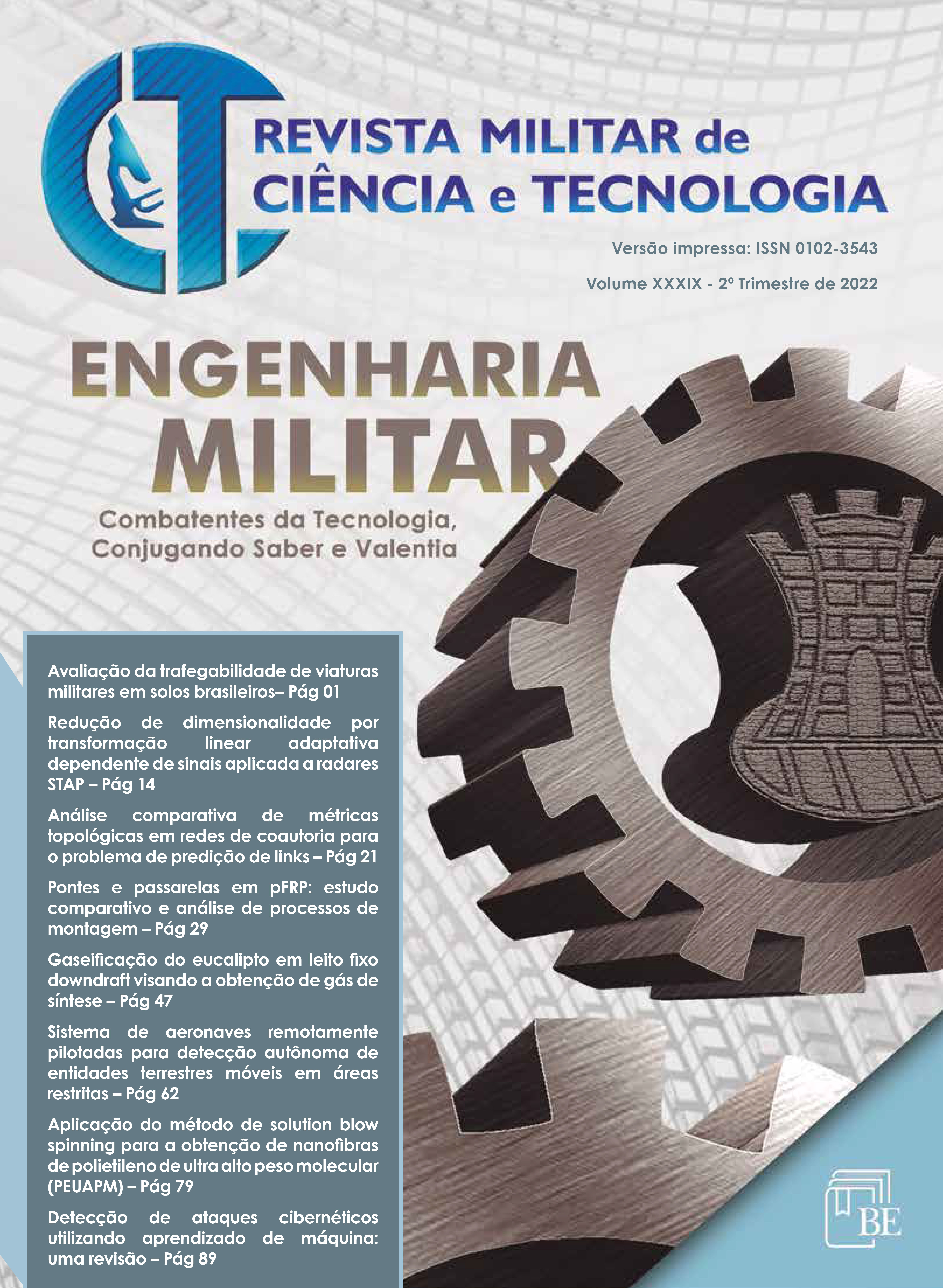Dimensionality reduction by signal-dependent adaptive linear transformation applied to STAP radars
Main Article Content
Abstract
One of the key applications of space-time adaptive processing (STAP) is the detection of targets by surveillance radar systems, most notably by airborne radars and possibly in presence of strong interference signals. Notwithstanding, the ever growing number of elements used to build phased array antennas yields an amount of processing data that prevents practical implementation of full-rank processing and imposes a limit to the applicability of reduced-rank techniques as far as hardware technology and real-time systems requirements are concerned. This work proposes the application of an adaptive and signal dependent reduced-rank linear transformation (RLT) method to radar systems space-time processing. One will verify the computational complexity reduction resulting from the application of the method, as well as its performance in terms of STAP metrics, will be compared with other established reduced-rank techniques available in the literature. In order to verify its performance, the application of the RLT method to STAP radar systems will be employed on a scenario with a fixed platform, in presence of strong clutter and jamming scenario.
Downloads
Article Details

This work is licensed under a Creative Commons Attribution-NonCommercial 4.0 International License.
A Revista Militar de Ciência e Tecnologia está licenciada:
A partir de 2022 sob as condições do Creative Commons (CC BY 4.0)
Até 2021 sob as condições do Creative Commons (CC BY-NC-SA 4.0)
Copyright: Os autores são os detentores do Copyright, sem restrições, de seus artigos.
As licenças estão informadas na página de acesso do artigo e são detalhadas a seguir:
Sob a licença CC-BY 4.0, você tem o direito de:
Compartilhar — copiar e redistribuir o material em qualquer suporte ou formato
Adaptar — remixar, transformar, e criar a partir do material para qualquer fim, mesmo que comercial.
De acordo com os termos seguintes:
Atribuição — Você deve dar o crédito apropriado, prover um link para a licença e indicar se mudanças foram feitas. Você deve fazê-lo em qualquer circunstância razoável, mas de nenhuma maneira que sugira que o licenciante apoia você ou o seu uso.
Sob a licença CC-BY-NC 4.0, você tem o direito de:
Compartilhar — copiar e redistribuir o material em qualquer suporte ou formato
Adaptar — remixar, transformar, e criar a partir do material
De acordo com os termos seguintes:
Atribuição — Você deve dar o crédito apropriado, prover um link para a licença e indicar se mudanças foram feitas. Você deve fazê-lo em qualquer circunstância razoável, mas de nenhuma maneira que sugira que o licenciante apoia você ou o seu uso.
Não Comercial — Você não pode usar o material para fins comerciais.
CompartilhaIgual — Se você remixar, transformar, ou criar a partir do material, tem de distribuir as suas contribuições sob a mesma licença que o original.
Sem restrições adicionais — Você não pode aplicar termos jurídicos ou medidas de caráter tecnológico que restrinjam legalmente outros de fazerem algo que a licença permita.
Aviso
Para qualquer reutilização ou distribuição, você deve deixar claro a terceiros os termos da licença a que se encontra submetida esta obra.

